I have a dictionary like this.
Dictionary<int, string> Diccionario = new Dictionary<int, string>(){
{1,"124"} , {4,"1457"} , {7,"478"},
{2,"1235"} , {5,"24568"} , {8,"05789"},
{3,"236"} , {6,"3569"} , {9,"698"},
{0,"08"}
};
And I'd like to get all combinations for n integer. For example.
for n = 11 - 11, 12, 14, 21, 22, 24, 41, 42, 44.
for n = 24- 11, 14, 15, 17, 21, 24, 25, 27, 31, 34, 35, 37, 51, 54, 55, 57.
for n = 339 - 236, 256, 259...
And so on... But I don't have ANY IDEA how I could iterate through all of those numbers, since the lenght of every number isn't always the same. (1 has three possible combinations, 2 has four; and so on)
Thanks!
Since you guys asked me where does the data come from... It comes from here.
Imagine the PIN is 1273, then it's necessary to create all possible combinations based on the adjacent digit (horizontally and vertically) for example (1 has 2, 3 and the number itself), to make it easier I made the dictionary that can be seen earlier, giving each key its possible value.
Since the answer was closed, I'm not sure what kind of info more I could add, because I can't say too much about the problem. It's like if I had a dictionary of colors, for example:
Dictionary<int, string> Diccionario = new Dictionary<int, string[]>(){
{1,{"red"}, {"blue"}, {"green"}} ,
{2,{{"green"}, {"orange"} },
{3, {{"dark"}}
};
So if I got the number 32 combinations would be: Dark Green or Dark Orange
Not sure If I'm ilustring my point.
